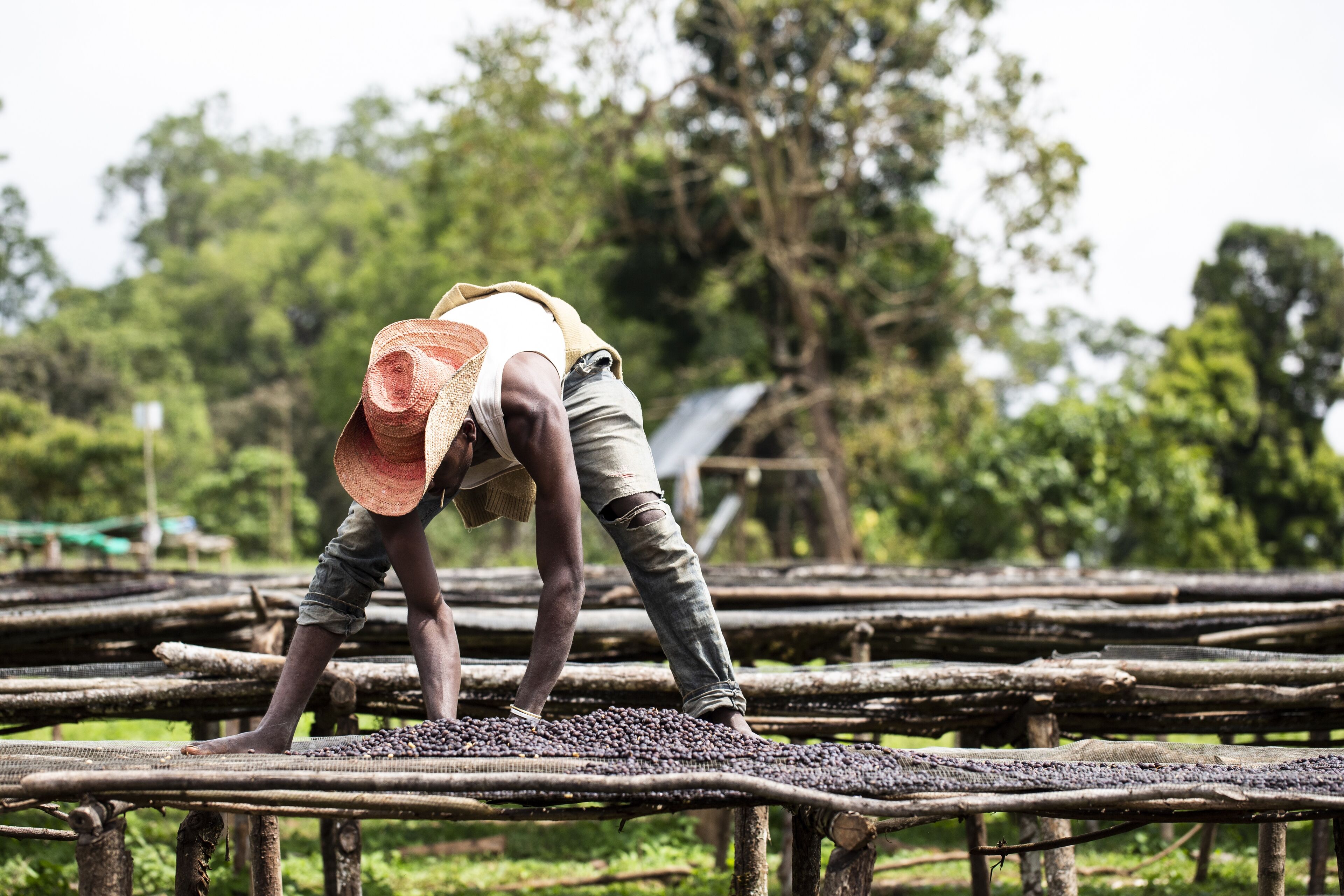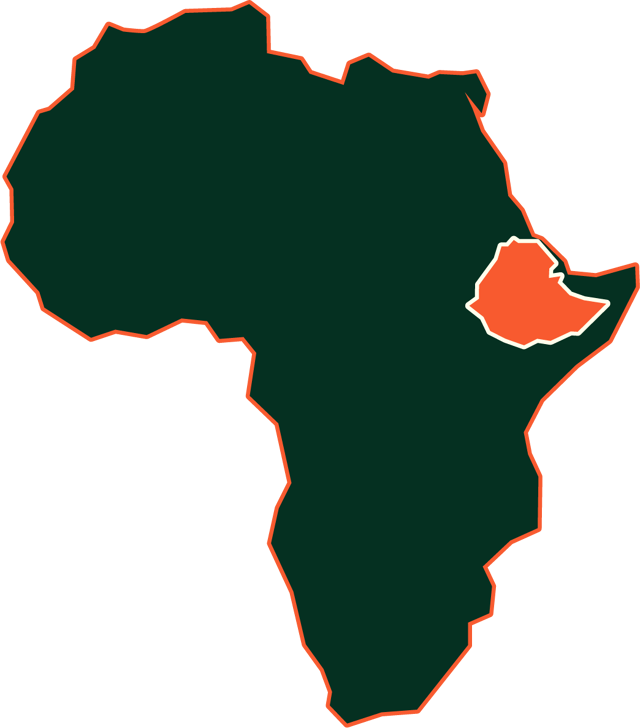
Ethiopia
Blog on the spot
Identity record

Capital city
Addis Ababa Area
590,000ha Average farm area
5ha Geography
Highlands and primary forest Harvest period
October - January Number of producers
15000000 Number of people living in industry
25000000 Bag production per year
8300000

The sector from the country
The sector
The industry is segmented according to the different stages of production: growers, collectors and exporters. The growers deliver their cherries to collectors (akrabi), who own the necessary washing and drying stations to process cherries and parchment. Each collector is licenced to operate in a specific woreda (district). Growers also dry some cherries for sale to collectors of husks (djenfel), to create grade 4 and 5 natural lots. Some have their own stations and process their own cherries; these are generally farmers owning more than 35 hectares of land.
The collectors then deliver their lots to the ECX (Ethiopian Commodity Exchange) auction market, or directly to exporters under a vertical integration contract. Each grower, collector and exporter must have its own licence. It is possible for one person to own all licences.
Foreigners are not entitled to apply for a licence, but are authorised to operate as agents (Commercial Representative Office, or CRO). Those with investor status can own a plantation of at least 150 hectares and export their own production.
Geography
Ethiopia is Arabica’s country of origin. It offers a rich mix of terroirs, biodiversity and practices that are unlike any other in the world of coffee. The high-altitude rainforests in the south-western region of present-day Ethiopia are where Arabica coffee originated from. Farmers still use these forests to grow coffee, in more or less complex agroforestry systems.
The Kaffa and Yayu biosphere reserves are now protected by UNESCO. Thousands of unidentified varieties grow there. 150 have been identified, and 35 are distributed by the Jimma Research Centre (JRC). They serve as a reservoir, a bit like a savings account, from which both JRC researchers and growers can draw to manage diseases such as rust or adapt to new growing altitudes and climate change. Wild coffee trees grow in nature at altitudes of 500 to 2,400 metres.
Local farmers have used their in-depth knowledge of the forests to develop original, resilient farming systems. The Jimma-Limmu-Gera, Nekemte and Kaffa appellation areas in the south-west and the Guji and West Arsi appellation areas to the south are dominated by a semi-forest system. In southern (Yirgacheffe, Sidama) and eastern (Harrar) Ethiopia, there are mostly orchards (gardens), with varying degrees of agroforestry adoption. Coffee is grown mainly in the highlands in southern and south-western Ethiopia, at altitudes ranging from 1,500 to 2,400 metres. Harvesting often coincides with the dry season, which means that all the coffees we supply can be sun-dried on tables.
Main actors
The Tea and Coffee Authority is the Ethiopian government agency responsible for regulating the industry. It sets minimum weekly export prices, for example. All contracts are registered with the National Bank of Ethiopia and must comply with Tea and Coffee Authority guidelines.
The JRC plays a significant role in identifying varieties ans selecting, producing and distributing seeds.
Coffees of
Spot price
€/kg
Spot price
€/kg
Spot price
€/kg
Spot price
€/kg
Spot price
€/kg
Spot price
€/kg
Spot price
€/kg
